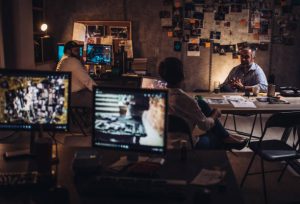Loras Network
Connecting Ideas, Empowering FuturesThe Fascinating Field of Audio and Video Forensics
Friday , 25, April 2025 Informations Leave a commentCombining technology, science, and some art, Brookstreet is an intriguing discipline. It’s like using sound and sight to play investigator. Suppose you are in a courtroom and the sole proof is a blurry film or a muted audio tape. How can professionals turn this undeveloped resource into absolutely clear evidence? Let’s delve right into the details of this intriguing field.

Audio forensics first of all addresses noises. Consider it as a sound sleuth. Audio forensics professionals examine every sound wave whether it’s from a phone call, a taped interrogation, or a podcast. They enhance voices or eliminate background noise by using specialist software to tidy recordings. This technique clarifies and increases value, just like polishing a diamond does.
Still, it goes beyond mere clarity. Analysts also give authenticity great attention. They check recordings to see whether they have been altered. This is looking at the digital fingerprints left behind, like a detective looking for prints at a crime scene. Every digital file has special marks that allow one to know where it originated. Should someone alter a clip, those indicators would not be accurate.
Let us now veer toward video forensics. This area looks at frame by frame video footage. Imagine a suspect in a hazy CCTV view. The role of an expert is to improve that picture to expose minute elements. Many times, they use super-resolution—where several low-quality photos are merged to produce a crisper picture. It’s like trying to fit a jigsaw puzzle together where every piece provides a vital clue.
Identification of people is a regular chore in video forensics. Facial recognition technology has developed remarkably quickly. It is not perfect, yet To make identifications, analysts can depend on a mix of face traits, haircuts, and even wardrobe. This approach can be as challenging as locating a needle in a haystack. Sometimes the difference between a miss and a match is a minor technicality.
Verification of events also depends much on audio and video forensics. They provide a chronology that can serve to clarify what happened, so helping to reconstruct situations. In a situation of claimed police misbehavior, for example, audio recordings can provide understanding of the interactions. They can expose the tone of voices, the seriousness of the matter, even the emotions involved. Legal processes can benefit much from this material.
Context is absolutely important when handling audio and video proof. It’s about knowing the surrounding situation, not only about the substance. Professionals have to take note on where and how the recording was done. Was that in a packed room? Exists a lot of background noise? These elements can seriously affect the study. It is like trying to understand an artwork without knowing the artist’s goals.
One could question the moral connotations. enormous responsibility follows enormous power. Professionals have to use their talents sensibly. Audio and video evidence used improperly could result in false allegations or convictions. Their job gains weight from this reality. They protect truth, not only act as technicians.
Still, the field is always changing. Rapid evolution of technology implies that tools and methods have to keep up. New analytical techniques and tools surface, so specialists must remain current. Always learning, always developing is like running against time.
Training in this subject combines critical thinking with technical ability. Knowing only how to use software is insufficient. Analyzers also have to be able to understand the information they come upon. They require a good eye for detail and a reasonable dose of curiosity. Many times, they become storytellers, piecing together tales from disparate data.
Audio and video forensics ultimately serves purposes beyond only technical ones. It’s about revealing the truth beneath layers of sound and picture. Every recording conveys a narrative; knowledgeable analysts highlight those stories. Their work affects life whether it is in a private probe or a courtroom. Remember: behind every piece of evidence in a crime drama is a universe of science and art collaborating. This will help you next time you view one.
Please give us your valuable comment